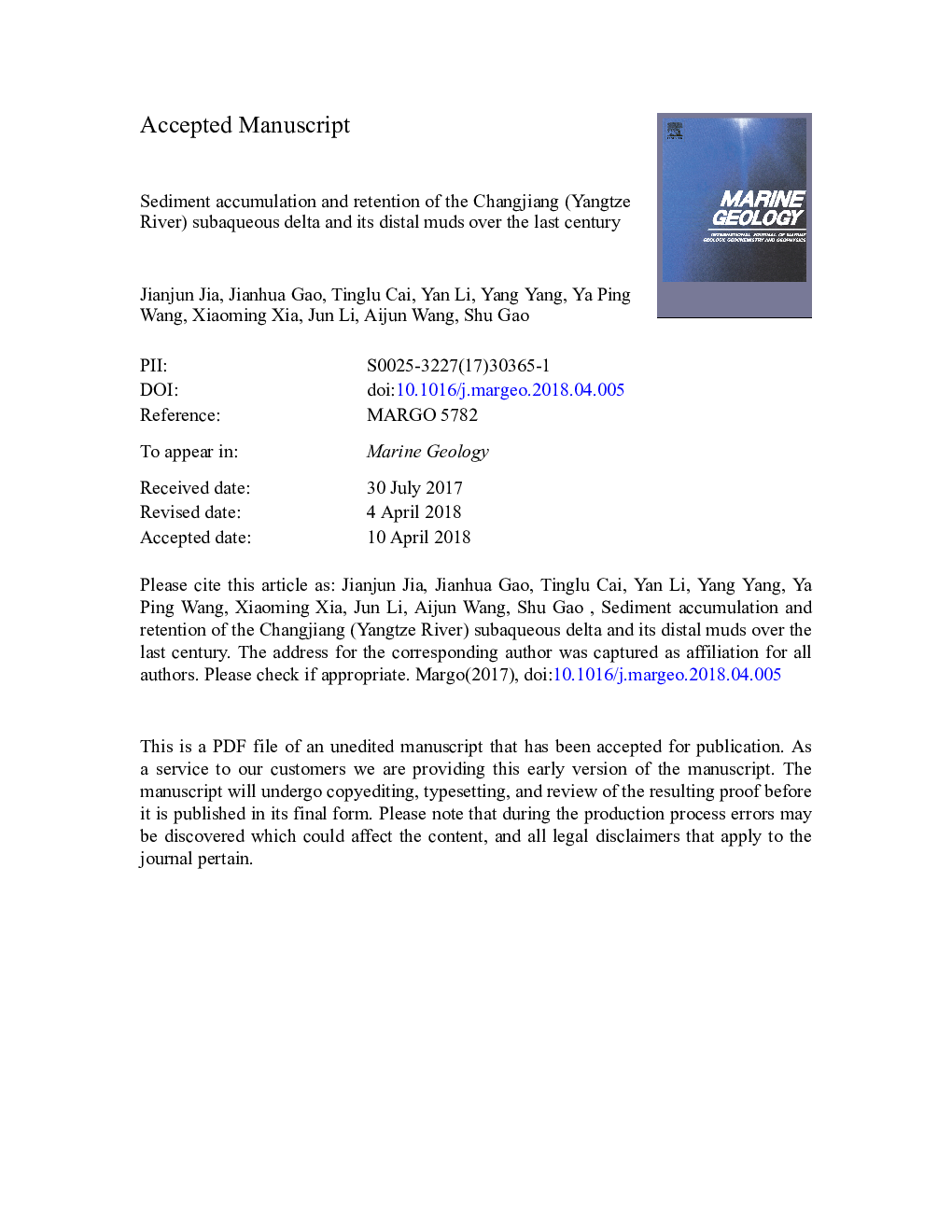| کد مقاله | کد نشریه | سال انتشار | مقاله انگلیسی | نسخه تمام متن |
|---|---|---|---|---|
| 8911961 | 1639051 | 2018 | 59 صفحه PDF | دانلود رایگان |
عنوان انگلیسی مقاله ISI
Sediment accumulation and retention of the Changjiang (Yangtze River) subaqueous delta and its distal muds over the last century
ترجمه فارسی عنوان
انباشت رسوب و انباشت رسوبات دریای چانگجیانگ (رودخانه یانگ تسه) و دلتا سواواک و مایع های دفاعی آن در طول قرن گذشته
دانلود مقاله + سفارش ترجمه
دانلود مقاله ISI انگلیسی
رایگان برای ایرانیان
کلمات کلیدی
شاخص احتباس رسوب، بودجه بندی مواد، نرخ رسوب، دلتا زیر آب مخازن گلدان، رودخانه چانگجیانگ،
موضوعات مرتبط
مهندسی و علوم پایه
علوم زمین و سیارات
ژئوشیمی و پترولوژی
چکیده انگلیسی
Mega-deltas are major sinks of river-borne sediments and important sources of terrigenous sediments for open shelves. Their evolution has far-reaching impacts on adjacent coastal waters, from the point of view of along-shelf morphodynamics and biogeochemistry. However, the complex budgeting patterns of input, storage, bypass, and final accumulation of sediment are still poorly understood. The Changjiang (Yangtze River) in China is among the world's largest river systems, not only in terms of water and sediment discharges but also the massive amount of sediment deposited in its subaqueous delta and distal muds. Here we discuss about the along-shelf sediment redistribution in the Changjiang Subaqueous Delta and Distal Muds (CSDDM) over the last century. For the purpose of understanding its spatial diversity in detail, we divided the study area into three spatially connected parts, namely the Changjiang subaqueous deltaic mud (CJM), the Zhejiang inner-shelf mud (ZJM), and the Fujian inner-shelf mud (FJM). The concept of sediment retention index helps understand the overall evolution of this mega-delta. Hydrological survey data from the peripheral rivers and short marine-sediment cores are used to evaluate the amount of sediment supplied to and deposited in the study area. The results show that over the last century, the rate of sediment supply to the CSDDM reached ~645â¯Mtâ¯yearâ1 on average (ranging between 535 and 725â¯Mtâ¯yearâ1), while the total sediment deposition in the CSDDM reached ~683â¯Mtâ¯yearâ1 on average (390-976â¯Mtâ¯yearâ1), with the ratio for the deposits in the CJM, ZJM and FJM being close to 3:5:2. As such, the input and output of sediment were generally in balance. The sediment retention indices are estimated to be 0.35, 0.86 and 1.00 for CJM, ZJM and FJM, respectively. This study contributes to our knowledge of marine sediment fluxes, facilitates a better understanding of the growth and development of mega-deltas under system regime shifts, and helps identify a sustainable development model for areas of high population density, heavy economic activity and rapid urbanization.
ناشر
Database: Elsevier - ScienceDirect (ساینس دایرکت)
Journal: Marine Geology - Volume 401, 1 July 2018, Pages 2-16
Journal: Marine Geology - Volume 401, 1 July 2018, Pages 2-16
نویسندگان
Jianjun Jia, Jianhua Gao, Tinglu Cai, Yan Li, Yang Yang, Ya Ping Wang, Xiaoming Xia, Jun Li, Aijun Wang, Shu Gao,
